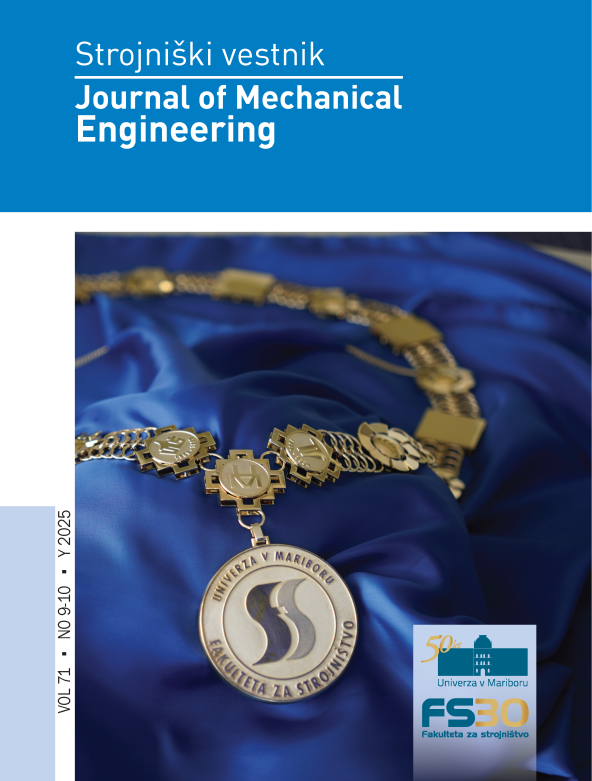Effect of Presetting and Deep Rolling on Creep of Torsion Spring Bars
DOI:
https://doi.org/10.5545/sv-jme.2025.1407Keywords:
creep, torsion bar, FEM analyzis, presetting, deep rolling, torque, twist angleAbstract
This study investigates the creep behavior of torsion spring bars by combining experimental testing and numerical modeling. Experimental investigations were performed on torsional specimens subjected to different presetting levels and deep rolling surface treatments, showing different effects on stress relaxation at a constant torsion angle. Finite element method (FEM) simulations incorporating elasto-visco-plastic material behavior successfully reproduced the time-dependent deformation observed experimentally. Material parameters for the FEM model were derived from experimental data. The findings show that a two-stage presetting process combined with intermediate deep rolling results in higher residual compressive stresses in the surface layers compared to a single-stage presetting process. Although this method aims to mitigate creep under constant loading conditions, its effectiveness is limited. A reduction in creep strains is only observed up to a presetting level of approximately 4.3 %; above this threshold, creep strains increase significantly and loading capacity decreases.
Downloads
Published
How to Cite
Issue
Section
License
Copyright (c) 2025 The Authors

This work is licensed under a Creative Commons Attribution 4.0 International License.


